Search Results For: culinary norwood
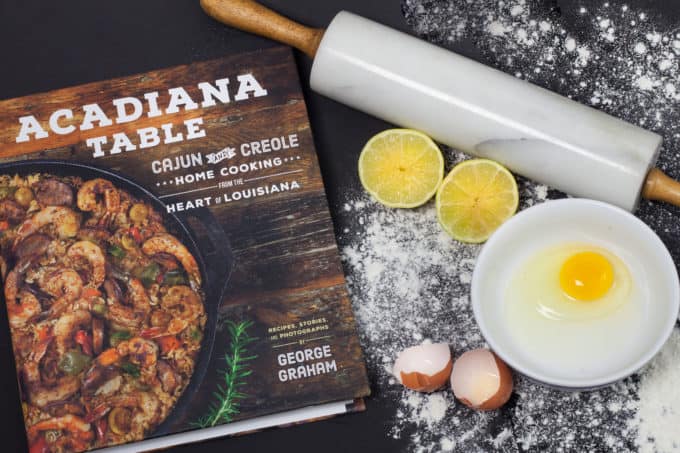
19
JulFirst, You Take a Cajun Swamp Tour. Next, You Make a Creole Roux.
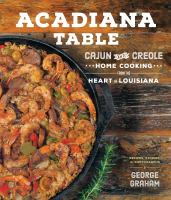 In The World on a Plate (2014), Mina Holland describes 40 world cuisines and the “stories behind them.” Reading her book, you travel across Europe and down through the Middle East, east to Asia and south to Africa. She ends the book with the “melting pots” of the Americas: the Dutch, Spanish and Portuguese influences in South America and the French, Polish, Germany, African and Asian inspirations to the north.
In The World on a Plate (2014), Mina Holland describes 40 world cuisines and the “stories behind them.” Reading her book, you travel across Europe and down through the Middle East, east to Asia and south to Africa. She ends the book with the “melting pots” of the Americas: the Dutch, Spanish and Portuguese influences in South America and the French, Polish, Germany, African and Asian inspirations to the north.
Of these 40 world’s cuisines, only the regions of California and Louisiana are included a mention in Holland’s book. A California Salad is dressed with Asian ingredients. BBQ corn is smothered with Cajun seasoning, accompanied by crawfish, and grits. Holland’s explanation is that most of Europe left its mark on the Northeast and the Midwest. Spain, through Mexico, impacted the South-Northwest. Yet, Louisiana cuisine is a unique rich blend of French, Spanish, Caribbean and Native American cultures and food.
We’ve heard of Cajun Shrimp. Creole Gumbo. Yet, Cajun and Creole cooking can be confused. They are very separate – and somewhat the same. A Louisiana travel site simplifies the differences by explaining that Creole is “city food” and Cajun is “country.” Another clarification is that Creole uses tomatoes and Cajun never does. Think gumbo and jambalaya and this explanation can fit.
The Cajuns were immigrants from French Canada – the Acadians. Acadia was a colony of New France that included parts of Quebec, the Maritime provinces (New Brunswick, Nova Scotia, and Prince Edward Island), and what we know now as the state of Maine. As early as the mid-1700s, Acadians traveled south to Louisiana on the Mississippi River or by ship along the Atlantic. In Louisiana, “Acadian” was shortened, very simply, to Cajun. The Acadians brought their spices and foods with them to the Gulf Coast.
Creole in French means “a person not indigenous to the country or land.” The word in Spanish is criollo. In Louisiana the meaning is more distinct with the Creole culture sometimes described as a blend of the French, Spanish, African and Native American.
I was lucky enough to visit Louisiana, specifically New Orleans, during one of the hottest weeks of this past June – the last full week before the Fourth of July holiday. As I grew to understand (from Lyft drivers and bartenders), the tourists vacate New Orleans after July 4. The tourist season officially ends then and tired New Orleans hotel and restaurant and bar staff finally get a break from the hectic, nearly year-round party in the Big Easy.
The American Library Association knows its members well – librarians who are on lean personal and professional budgets. For that reason, ALA’s conferences are held in some of the hottest locales in the country in the summer (Anaheim, Washington DC, and Las Vegas) and the coldest cities in the winter (Chicago, Boston, and Indianapolis).
This year was no exception, of course, when the NOLA (New Orleans, LA) humidity made 95 degree weather practically unbearable during the conference held June 21 through the 26 at the Ernest N. Morial Convention Center along the Mississippi River.
My conference week (spent mainly indoors in the kilometer-long air-conditioned convention center) ended midweek and two of my hardy, best friends since 7th grade arrived for a girls-only Louisiana adventure. The three of us moved into a lovely hotel, complete with center garden, just steps from Bourbon Street. Together, we braved the New Orleans heat, learned of its illustrious history, and ate our way through its impossibly-delicious cuisine for five wonderful days.
I had already discovered the best fresh, hot beignets, bowls of gumbo, chargrilled oysters, and sippable drinks before my girlfriends arrived. So, we gobbled oysters at Dragos and sipped Sazeracs at the Public Belt. We hopped on and off the tour bus and visited the Garden District, Tremé, the French Market, and Canal and Tchoupitoulis Streets. At the original Café du Monde we guzzled coffee accompanied by beignets that were smothered in mounds of confectionary sugar (somewhat like puffed fried dough).
We braved a buggy ride behind a hairy mule (the mules fare much better than horses in the heat) and learned oodles about the architecture of New Orleans, including the restrictions for homes in the Historic District. We walked with some trepidation along Bourbon Street with its rowdy crowds, crisscrossing the French Quarter to our chosen nightly restaurants and cocktail bars. We tasted a Pimm’s Cup, a French 75, and a Viuex Carre in a Nick and Nora finely-etched glass.
There were many highlights of our girls’ vacation, but two are of the type none of us will ever forget.
The first was a swamp tour along the West Pearl River, reached by a 45-minute drive north of New Orleans and over the eight-mile bridge spanning Lake Pontchartrain. The bridge is new and it sits directly next to the ruins of the previous one destroyed in 2005 by Hurricane Katrina. Once on the bayou, our tour guide commanded his pontoon boat for a little over 2 hours along the swamps lined with Bald Cypress trees and filled with very visible alligators. He sidled up to a luscious shrub and offered us a pungent bay leaf, different than we had ever smelled before. He pulled up close to where a red fern grew from a lone river log. We three women from California and Massachusetts, and our local tour guide from the bayou, spent much of the time talking recipes and cuisine, serenaded by afternoon cicadas and shaded by overhanging swamp growth.
The second experience was a hands-on cooking class at the New Orleans Cooking School. While it is a business that caters to the tourist, it was also an adventure like no other. For 2-1/2 hours we three each had our own kitchen island complete with induction stove and all the equipment and ingredients we needed to make Cajun Gumbo, Beef Grillades with Grits, and Bananas Foster (complete with flame and magic dust.) We drank spicy Bloody Marys, local craft beer, and ate our own creation of three courses of deliciousness accompanied by our teacher/chef’s stories of Cajun and Creole lore.
There are many books throughout the libraries of the Minuteman Library Network. We have four of the best that will help you to navigate the Cajun and Creole cuisines.
Ten years after Hurricane Katrina, Cooking Up a Storm (2005) was re-published in 2015. The book was originally compiled as recipes “lost and found” by the Times-Picayune and stories and recipes of New Orleans’ culinary heritage. George Graham’s Acadiana Table (2016) includes traditional Louisiana recipes and some brand-new options. We have John Besh’s Besh Big Easy (2016). The author of the bestselling cookbook My New Orleans (2009), owner of twelve restaurants and host of two public television shows has written a fourth book about his native Creole cuisine. Another television cooking celebrity, Kevin Belton, has written New Orleans Kitchen, published this year. If you can’t make a trip to New Orleans, you can let the good times roll, Cajun or Creole-style in your own home.
Charlotte Canelli is the Director of the Morrill Memorial Library in Norwood, Massachusetts. Read Charlotte’s column in the July 19, 2018 edition of the Norwood Transcript and Bulletin.
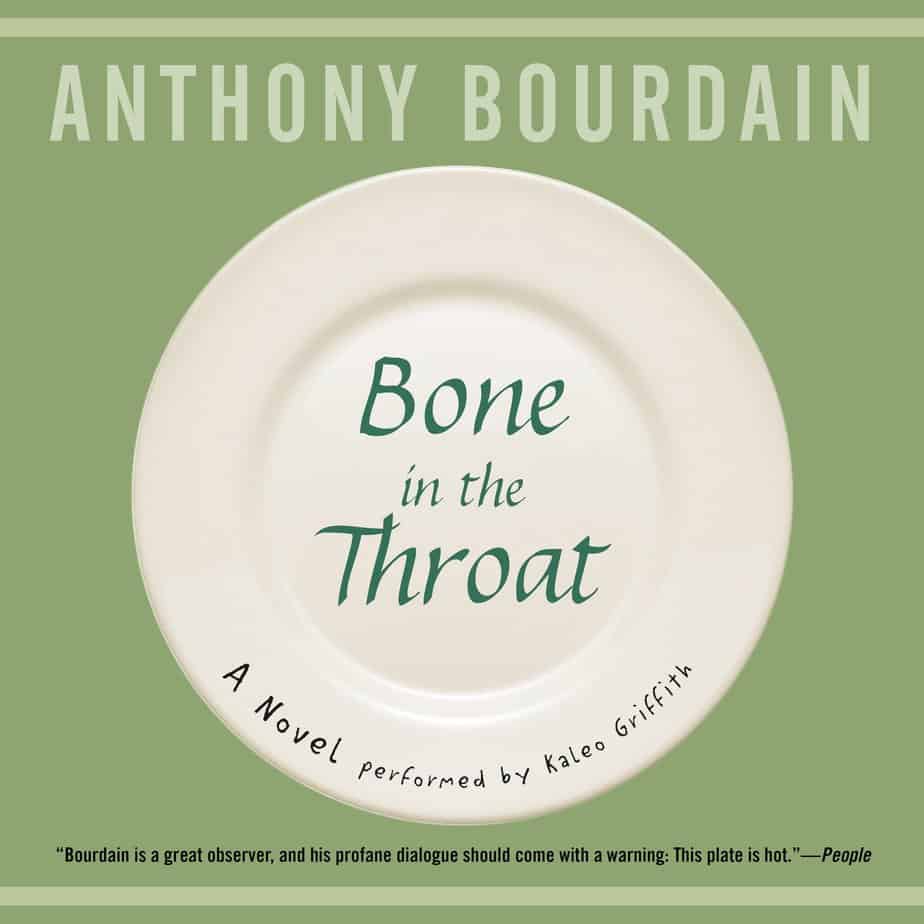
21
JunThe Light and Darkness of Anthony Bourdain
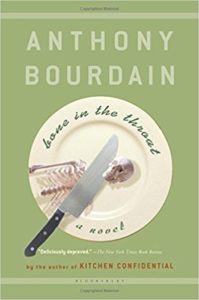 Anthony Bourdain described himself as a child being irresistibly drawn to the headiness of fresh, raw oysters in France. As a young man he was lured to the restaurant kitchen, to the love of food, and the thrills of the unsavory truths of working in food service. Throughout Kitchen Confidential, he admits his attraction to the dark and risky, to drugs and drinking, and to a life spent in restaurants and at bar tables. In that memoir, Anthony Bourdain invited us on a ride through “the culinary underbelly” of the kitchens, freezers, and back alleys of New York City restaurants.
Anthony Bourdain described himself as a child being irresistibly drawn to the headiness of fresh, raw oysters in France. As a young man he was lured to the restaurant kitchen, to the love of food, and the thrills of the unsavory truths of working in food service. Throughout Kitchen Confidential, he admits his attraction to the dark and risky, to drugs and drinking, and to a life spent in restaurants and at bar tables. In that memoir, Anthony Bourdain invited us on a ride through “the culinary underbelly” of the kitchens, freezers, and back alleys of New York City restaurants.
In 1973 Anthony Bourdain left his somewhat affluent home and a New Jersey private preparatory school for college. Vassar – an elite, selective all-women’s college – had opened its doors to men in 1969, just four years before his arrival. Yet, after only two years there, Bourdain dropped out. He had already spent time in Provincetown as a restaurant dishwasher and he had high praise for that job, explaining that he had to learn to work with others, to be on time, and to treat his superiors with respect. It was a few years later, after he returned to school (graduating in 1978 from the Culinary Institute of America in Hyde Park) that he began moving up the line as cook, sous chef, and finally to running restaurants on his own. It was also in these intimate kitchen settings in the 1980s where he became addicted to heroin and cocaine.
After his death by suicide last week, Bourdain was sometimes described by his critics as the fool-mouthed loser, the swaggering rogue, or the lowlife addict. His fans, however, know him more as a man who rose above his addictions to free himself of drugs by the early 90s (Bourdain received at least five years of treatment from methadone clinics). It was around 1994 that a friend challenged Bourdain to write. Bourdain had been a bright student, one who was well-read and who had always found writing easy. And so, Bourdain wrote.
In 1995, his mystery thriller Bone in the Throat was published. The book, described as “deliciously depraved” by New York Times reviewer Marilyn Stasio, is extremely funny and very irreverent. A body washes up on a New Jersey beach after being dumped in the New York Harbor and Bourdain begins to introduce us to his characters – SoHo hipsters, Mafiosos, flirty women and very bad men. They reminded me of Carl Hiaasen’s losers – those hanging around the Everglades and the Florida Keys.
Bourdain followed his first novel with Gone Bamboo in 1979 and again mixed mayhem, assassins and lots of tequila in another murderous swill. He was disappointed with his novels’ lack of the mainstream success. Yet, both were reprinted in paperback editions and Bone in the Throat, with Bourdain as an executive producer, was made into a film. (It did, however, receive mixed reviews and the DVD of the movie does not seem to have been released. There’s no sign of it on Amazon or Netflix).
In 2000, when he was 44 years old and the executive chef at New York’s Brasserie Les Halles, Bourdain decided to write about the life as he knew it – the behind-the-scenes, more often seedy, always raw and steamy, restaurant scene. What began as an essay for The New York Press (a local free-rag) ended up in the very respectable New Yorker magazine as “Don’t Eat Before Reading This.” Soon after, the full-length version published as Kitchen Confidential hit the bookshelves. That book appealed mainly to those who worked behind the scenes and façade of the linen-tablecloth’d, maître-d’d front room of the finest (and not-so-finest) eating establishments around the world. But it also quickly gained fame and readers clamored for more. Bourdain followed with A Cook’s Tour, which included a television show produced in 2000 and 2001 and aired beginning in 2002. This deep dive into world food became a hit on the Food Network and his faithful viewers loved his honest, often humble, sometimes macho take on the world’s dining tables.
At 44, rugged, handsome and charismatic Bourdain had the country, and the world, hooked. Yet, he admits at this time he was working to make ends meet. He had been married to Nancy Putkoski for over twenty years, from his addict days through his first literary and television successes. Finally, it seemed that he had won over some of his earlier demons – those of feeling a failure and a fraud. Anthony Bourdain’s Les Halles Cookbook was published in 2004, followed by Nasty Bits (2006), No Reservations (2007), and Medium Raw (2010).
Bourdain’s respectful celebrity grew with 35 episodes of A Cook’s Tour (2002-2003), nine seasons and 142 episodes of No Reservations. By the time of his death by suicide on June 2018, Bourdain had written 13 books and he was the immensely successful journalist/celebrity/host of the CNN program, Parts Unknown in its 11th season. He was, however, twice divorced (although that second divorce had not been finalized).
After his death, the world focused on Bourdain’s critical acclaim and the crucial need to prevent other deaths by suicide. Yet, many readers’ questions will be answered in his books when he shared his passions and his demons. He was inspired by books and reading. He loved passionately, especially as a father. Yet, he often spoke of the darkness and loneliness in his life.
In Anna Karenina, Leo Tolstoy wrote that “Happy families are all alike; every unhappy family is unhappy in its own way.” In the introduction to one of his last books, Appetites: A Cookbook, Anthony Bourdain writes that “Tolstoy never spent any time with my happy family.” At the time of publication, Bourdain’s daughter was 8 years old and it might have been Bourdain’s happiest time. He had finally found fame, wealth, and at the same time, contentment with his wife and daughter and professional life. Bourdain traveled about 260 days a year, yet he always carved out a five-day respite every month to spend with his daughter. He writes, in that introduction, that he made major changes in his lifestyle when his daughter was born. He was no longer “the star in his own movie.”
Every talk show featuring Bourdain and every speech he wrote portrayed an honest, humble man who was accessible and approachable. He rarely turned down an interview or an opportunity to write the introduction to another cook’s book. By the age of 61, he seemed to have overcome the personal failures of his youth. I have huge respect for the man and it has saddened me that his demons still lurked below the surface of success. A history of good food, adventurous eating and honest philosophy in his books is what Bourdain has left behind for us.
Charlotte Canelli is the Director of the Morrill Memorial Library in Norwood, Massachusetts. Read Charlotte’s column in the June 21, 2018 edition of the Norwood Transcript and Bulletin.

27
NovRevisiting New England from Fluff to Baked Beans
The United States is a diverse country. We are a culturally, intellectually, and religiously diverse people, and our regional foods reflect that. Every state, and even every city can lay claim to its own slice of American culinary culture. Buffalo, NY contributed the chicken wings that are so popular on game day, Philadelphia is all about the cheese steak, and it is hard to think of Chicago without thinking of deep dish pizza. While New England may not have a dish as popular as the buffalo wing or as iconic as Texas barbeque, a surprising number of amazing foods have roots right in our own back yard.
I started thinking about this when I saw a new book sitting on one of my co-worker’s desks awaiting processing. “Fluff: The Sticky Sweet Story of an American Icon” by Mimi Graney chronicles the story of the fluffy marshmallow spread that has been a lunchbox hit for decades. After reading this entertaining history and running to the store to purchase a jar of the marshmallow-y goodness I was seriously craving, I came to think of other things that are regional favorites.
Naturally, my mind went straight to what many people consider to be the Commonwealth’s most recognizable treat: Boston cream pie. While this “pie” might be the official dessert of Massachusetts (yes, Massachusetts has a state dessert), I don’t find it to be terribly representative of classic New England food culture. As Brook Dojny explains in “The New England Cookbook : 350 Recipes from Town and Country, Land and Sea, Hearth and Home,” New England cooking has been shaped not only by the native peoples that have inhabited this land for countless generations, but also by the multitude of immigrants that found their ways to our rocky shores, and even by geography itself.
Quintessential New England recipes are hearty and filling. They use easily available ingredients, largely from local sources, and are rarely fussy or overly complicated. Some prime examples of this are baked beans, chowders, Johnny cakes, steamed seafood, and the fruit cobblers and pies that are so prevalent on our tables.
Speaking of desserts (mostly), “The New England Orchard Cookbook : Harvesting Dishes & Desserts from the Region’s Bounty” by Linda Beaulieu was another recent find that solved a problem common to many Bay State families this time of year. We were positively drowning in a glut of apples after an apple picking outing with my husband, sister, and niece. Even with four enthusiastic apple eaters, we had barely made a dent into our haul weeks later. While I had to order this book from another library in the Minuteman Library Network, it was well worth the wait. Part travel guide, part agricultural history lesson, and part cookbook, this book did not disappoint. In no time, we had reduced our apple stock- without getting sick of them!
While most New Englanders can agree that an old fashioned apple pie is delicious, there are many traditional dishes that folks love or just love to hate. Moxie soda (love), brown bread from a can (love), Necco Wafers (love, especially the clove flavor), clam chowder (hate), and even good old marshmallow Fluff (love). Regardless of whether you think Indian pudding is delicious or horrible, mealy sludge, I think we can all agree that New England has a lot to offer when comes to filling our bellies.
Read Alli Palmgren’s column in the November 23, 2017 edition of the Norwood Transcript and Bulletin. Alli is the Technology Librarian at the Morrill Memorial Library.
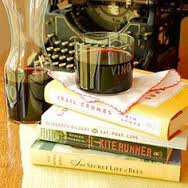
14
NovBuild Your Own Book Group
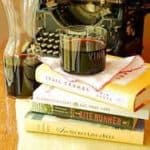 I should have seen it coming. Interest in my book group of over a quarter century had been gradually dwindling. The former minister’s wife moved to Rhode Island, the writer was taking a Tuesday night class, the endodontic office manager couldn’t commit, and the frequent flyer, well, just took off. Finishing the reading each month was encouraged if not required. Requests to refrain from giving away the ending, however, were almost always ignored.
I should have seen it coming. Interest in my book group of over a quarter century had been gradually dwindling. The former minister’s wife moved to Rhode Island, the writer was taking a Tuesday night class, the endodontic office manager couldn’t commit, and the frequent flyer, well, just took off. Finishing the reading each month was encouraged if not required. Requests to refrain from giving away the ending, however, were almost always ignored.
Attendance waxed and waned over the years as new faces came and went, but we could usually count on a core group of eight. But when only two of us turned up in October, after a six-month hiatus, we were forced to read the writing on the wall.
Trying to determine how long we’d been convening, I recalled a particular incident. At one of our early meetings a thirsty member had inquired, “Where’s your booze?,” prompting the resident toddler to run and fetch his foul-weather footwear. He had apparently mistaken “booze” for “boots.” The kid turns 26 next week.
Book club wasn’t all about plot, dialogue, and denouement. The sweets and savories were also key ingredients, as was the wine. Some hosts stepped it up a notch and prepared special food that related to the reading. We talked about Isabel Allende’s “The Japanese Lover” while sampling made-from-scratch mango and green tea mochi. Lox and kugel accompanied our discussion of Kristin Hannah’s Nazi-era novel “The Nightingale.” And a gorgeous tarte tatin was the perfect complement to the posthumously published “Suite Francaise” by Irene Nemirovsky.
In the thematic culinary department I contributed precisely nil. I’m an appreciative eater if not much of an entertainer. More creative types might want to consult “The Book Club Cookbook” by Judy Gelman, containing “recipes and food from your book club’s favorite books and authors.”
Since most of us wouldn’t have seen each other since the previous meeting, naturally we’d have personal news to share. We were familiar with each other’s families, jobs, holidays, hospitalizations, and whose kids were struggling in school, going to prom, graduating, getting deployed, or getting engaged. There might have been a wee bit of gossip as well. If time allowed, we even talked about the book.
My youngest daughter, who called a day or so after the group’s demise, was sympathetic. As one of the original members, I’d been part of this book club her entire life. Belle told me how disappointed she was to have gone to only one meeting of a book group in Brooklyn before she moved away. The conversation eventually turned to what each of us was reading.
I had just finished Will Schwalbe’s moving memoir, “The End of Your Life Book Club”–for the second time. I’d meant to skim it just to refresh my memory but ended up rereading it cover to cover. In college I actually took a speed-reading course to train my eyes to jump from phrase to phrase. That practice ended abruptly with the final exam. When I read for pleasure I prefer not to rush. Perhaps the only advantage of this tortoise and hare approach is that I could usually recall most of the characters’ names at book group, having stayed up too late the night before reading every word.
Will Schwalbe—writer, editor, and devoted son—learns that his indomitable mother has been diagnosed with stage 4 pancreatic cancer. To help pass the time during her lengthy chemotherapy treatments, they talk about books. While living down the street from Julia Child, with her husband and three children, Mary Ann Schwalbe was director of admissions at Harvard. She subsequently devoted her life to helping refugee women and children and building libraries in Afghanistan. She was universally beloved.
Aside from wishing I’d had Mary Ann for a mother and Julia for a neighbor, I loved reading about all the books the author and his mom discussed. I felt like a fly on the wall, eavesdropping on their conversations about life, literature, love, loss, and anything and everything else. Many of the titles they talked about I had also read, and now want to read again. As for those I hadn’t, the list in the Appendix will provide a lifetime’s worth of recommended reading. I calculated that our book club read roughly the same number of books in twenty five years as Mary Ann and Will tackled in two.
But back to my conversation with Belle. If the Schwalbes could start their own book club, why couldn’t we? She sounded intrigued and suggested we include her sisters. Easier said than done since we live in multiple time zones, but it seemed a great way to connect. I was dubious about the logistics until my co-worker told me we could video conference using Google Chat.
I got the green light from three of the kids. The fourth, possibly preoccupied with a new romance, said she’d consider it.
Like the girls themselves, their tastes in reading are totally different. The oldest is a big fan of Kurt Vonnegut and Wally Lamb, the next in line leans toward the classics, while the youngest chooses books I might never pick up on my own. Then there’s Katie, who’s been slogging through Herman Wouk’s “War and Remembrance,” at my urging, for the better part of two years. It’s become a joke.
I realize the odds of five of us agreeing on a book, reading the book, and scheduling a time to discuss the book–factoring in the nine-hour time difference and the inevitable technical difficulties–are slim at best. But no one could have predicted our first book club would pass the quarter century mark, nor could Mary Ann and Will have anticipated being granted enough time after her diagnosis to share their thoughts on over 200 titles.
The verdict is in. We’ll begin our hopeful endeavor with “My Brilliant Friend,” book one of the four Neapolitan Novels by Elena Ferrante. It’s not quite as ambitious as it sounds, since two of the girls have already read it and I’m halfway through, but still. To misquote the immortal words of Humphrey Bogart in “Casablanca,” “this could be the beginning of a beautiful book group.”
April Cushing is the Head of Adult and Information Services at the Morril Memorial Library in Norwood, Massachusetts. Read her column in the November 10, 2016 issue of the Norwood Transcript and Bulletin.
Mastering the Art
I recently reacquainted myself with one of my favorite cookbooks, “Mastering the Art of French Cooking”, by Julia Child, Simone Beck and Louisette Bertholle. I added this book to my personal collection back in the late ‘80s when I was working at the Morrill Memorial Library as a page. This particular edition of this classic was being withdrawn from the collection. Even at my young age, I knew this was a deal I shouldn’t pass up, even if I wasn’t cooking for myself yet, as I was still in high school. At home, we ate the usual American fare, mostly meat and potatoes. Occasionally, I’d have a taste of traditional dishes from Lithuania, as both sides of my family emigrated from the Baltics. Why I decided to bring this selection home at that time was a bit of a mystery.
Despite having a rather unique cultural heritage, I never had an adventurous palate. Even when trying the Lithuanian dishes, my favorites were blynai or kugelis – both potato based recipes. The only time I ever tried something really different was when I traveled to France for my junior year abroad in college. I had the benefit of living with a woman whose father was a butcher and a bit of a home chef. We would go to her parents’ house for dinner on Sundays where her mother and father would present me with a ‘mystery’ meal. They never told me what they were serving until we finished dinner. I had the opportunity to taste such French delicacies as Escargots à la Bourguignonne (snails with garlic and butter), Cuisse de Grenouille (frog legs), Lapin à la Moutarde (rabbit with Dijon mustard), Terrine de Foie Gras (goose liver) and much more.
After returning from France, my culinary habits didn’t stray too far from my American staples despite my experiences in France. I would try different recipes for the basic proteins of beef, chicken, and pork but I always stuck to American based cookbooks like the “Joy of Cooking” or “The Fannie Farmer Cookbook” or even “The New York Times Cookbook.” I started to venture out a little bit once The Food Network caught my attention but even then, I stuck to the basic American chefs like Alton Brown, Bobby Flay and Rachel Ray. Occasionally, I would refer to their cookbooks such as, Alton’s “Good Eats: The Early Years,” “Bobby Flay’s Bar Americain Cookbook” or Rachel’s “30-Minute Meals.” Once in a while, I’d branch out to try one of the Italian recipes in Giada De Laurentiis’ “Everyday Italian: 125 Simple and Delicious Recipes.” Things were perking up in the kitchen.
Then I got hooked on Bravo’s reality show, Top Chef. Although I’m not a ‘foodie’ by any stretch of the imagination, I was mesmerized by this program and the amazing creativity and delicious looking meals the talented chefs were making in such a short period of time. I started to scope out some of the cookbooks published in association with the show: “Top Chef: The Cookbook”, “Top Chef: The Quickfire Cookbook,” and “How to Cook Like a Top Chef.”
Since I became so interested in the journey and recipes of these chefs, a colleague of mine recommended that I read “The United States of Arugula: How We Became a Gourmet Nation”, by David Kamp. I’m learning all about the chefs and journalists who were instrumental in introducing the general American public to gourmet cuisine, including James Beard, Julia Child and Craig Claiborne. It was during this engrossing read that I remembered that I had the two volume set of “Mastering the Art of French Cooking”; a classic cookbook that I barely opened since I brought it home so many years ago. The books had been sitting on my bookshelf in the kitchen the whole time. I just hadn’t ventured to open the pages…yet — I decided now was the time.
I began with some of the basics and classics like: Soupe à l’Oignon Gratinée, Vichyssoise, Coq au Vin, and Boeuf Bourguignon. The dishes were delicious and it was fun to make something different. I was recounting my new venture of cooking with a friend and she told me that I had to watch the movie, Julie & Julia, which is a tale about a young woman cooking all of the recipes in Julia Child’s classic cookbook during one year. I wasn’t going to go to that extreme but the exercise did awaken in me a new love for cooking with ingredients that weren’t so common in my pantry.
My family never knows what might be on the table each evening. Sometimes it’s an American staple like homemade macaroni and cheese from Rachel Ray’s cookbook or it could be quiche or even ratatouille. The books and cooking shows brought a sense of fun back into the kitchen for me and family back to the table.
Diane Phillips is the Technical Services Librarian at the Morrill Memorial Library in Norwood, Massachusetts. Read Diane’s column in the September 15, 2016 issue of the Norwood Transcript and Bulletin.
